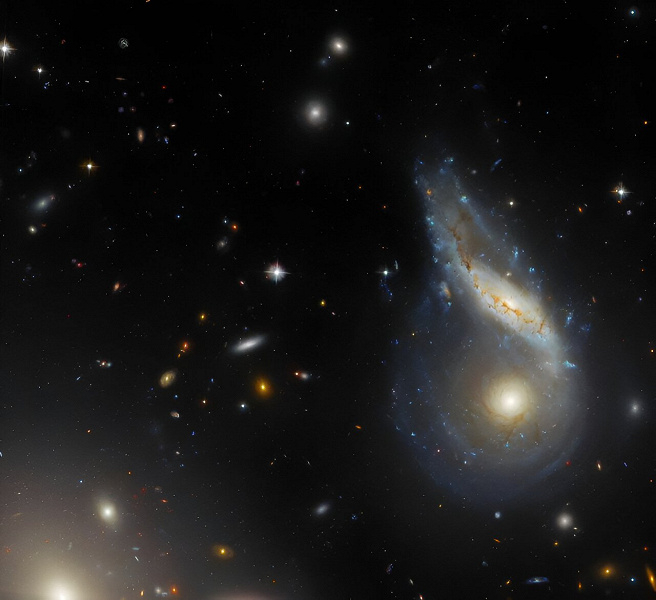Hubble showed two galaxies intertwined
A new image from the Hubble Space Telescope is a breathtaking snapshot of a galactic collision, illustrating the dynamic process of merging two galaxies. At first glance, it seems that this is one galaxy, but in fact they are two different galaxies – NGC 6040 and LEDA 59642, colliding in a spiral dance. The object is at a safe distance of about 570 million light years from Earth.
This event is a long process occurring over a slow time interval. For example, our home galaxy is about to collide with the neighboring Andromeda galaxy (M31), but they have about 4 billion years left before they meet. The model impact event captured in this image could take millions of years to complete. The vast distances in space cause this protracted event.
Galaxies – These are clusters of stars, solar systems, dust and gas, as well as dark matter. During collisions and mergers of galaxies, gravitational forces act on these components, causing changes in their structure and shape. It is as a result of such processes that galaxies acquire a new shape or completely merge, creating a new formation. This outcome is also foreseen for the process in the presented image.
Galaxies resulting from mergers usually have an elliptical structure, since the merger process destroys more complex structures characteristic of spiral galaxies. This is probably what the Arp 122 galaxy will look like after this collision is over. However, we will have to wait a very long time to observe this transformation in full.

